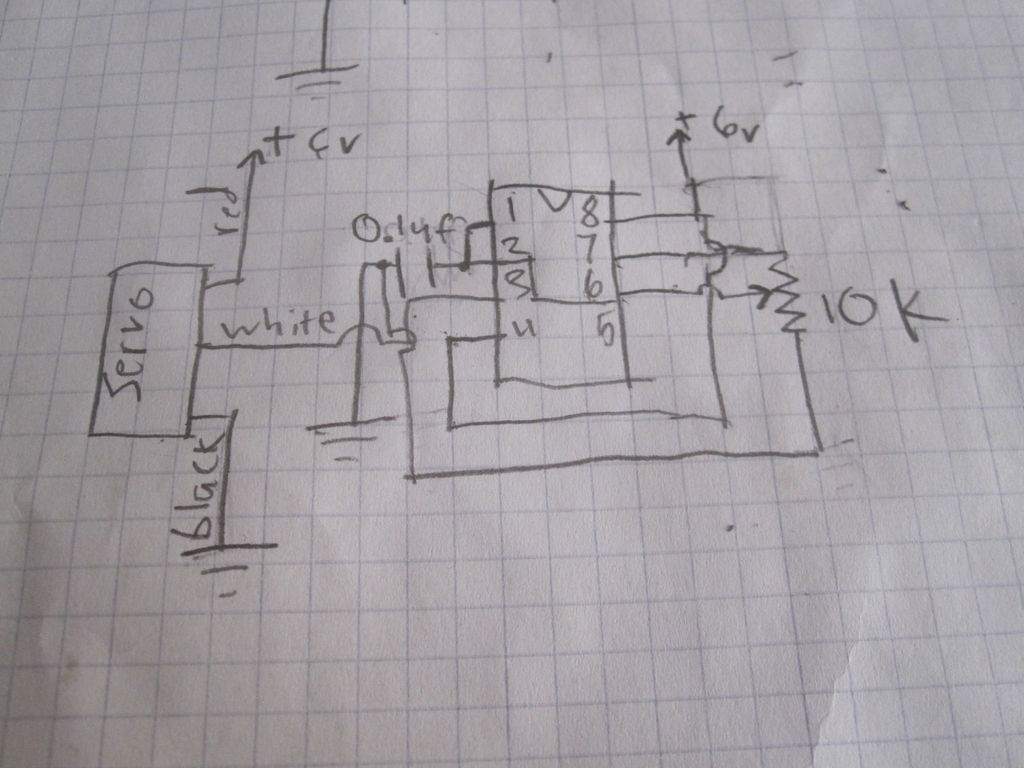


The important thing here is the DUTY RATIO of the PWM signal. The frequency of PWM (Pulse Width Modulated) signal can vary based on type of servo motor. This data regarding position of shaft is sent through the SIGNAL pin. The position data to the control should be sent in the form of PWM signal through the Signal pin of servo motor. Simply speaking the control electronics adjust shaft position by controlling DC motor. The RED wire is connected to power, Black wire is connected to ground and YELLOW wire is connected to signal.Ī servo motor is a combination of DC motor, position control system, gears. The position of the shaft of the DC motor is adjusted by the control electronics in the servo, based on the duty ratio of the PWM signal the SIGNAL pin. A servo motor will have mainly there wires, one is for positive voltage another is for ground and last one is for position setting. Servo motors are available at different shapes and sizes. So you have to use separate power supply for the motors, either it be from some adapters (5v 2A) or from good quality 9v batteries.īefore going into detail, first we should know about Servo Motors. Connecting multiple Servo Motors with Arduino seems to be easy and but if we connect all the Servos to Arduino supply pins then they won’t work correctly because of lack of enough current to drive all the motors.
#SERVO MOTOR ARDUINO CIRCUIT DIAGRAM HOW TO#
Here, we are going to show you that how to control Multiple Servo Motors with Arduino. Myservo.Using one or two Servo with Arduino is Easy but what if we want to use more than one Servo Motors?

In keeping with our goal of making something Useful and Unique we will use the servo to display the value of a measured voltage. Remember every change you make must be downloaded to the arduino before it will take effect. You can mess around with changing numbers to see what you get.
#SERVO MOTOR ARDUINO CIRCUIT DIAGRAM CODE#
This code will make your servo move to several positions and wait for 1 second at each. Myservo.write(120) // move servos to center position -> 120° Myservo.write(60) // move servos to center position -> 60° Myservo.write(90) // move servos to center position -> 90° Myservo.attach(9) //connect pin 9 with the control line(the middle line of Servo) We can only use them if we create the object "myservo" for the complex structure of "Servo". *"attach" and "write" are both functions,Īnd they are members contained in the complex structure of "Servo". * you can see Servo as a complex date type(Including functions and various data types) Objects like the following "myservo" to refer to the members in ".".*/ We can use the functions and variables created in the libraries by creating We can use the "class" like "Servo" created by the developer for us. * After including the corresponding libraries, Here is some sample code that you can copy and paste into the arduino IDE. Very simply put #include at the start of your code. To control the servo we will use the Servo library.


 0 kommentar(er)
0 kommentar(er)
